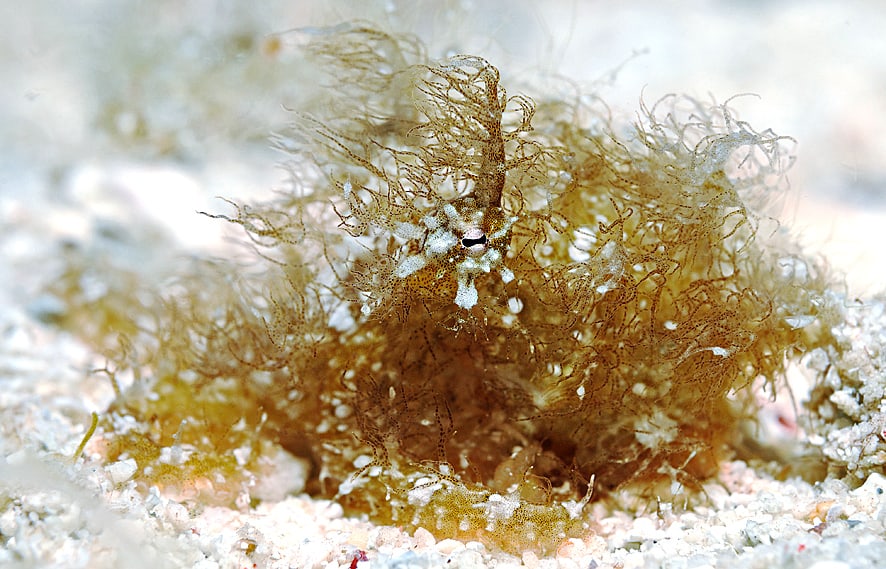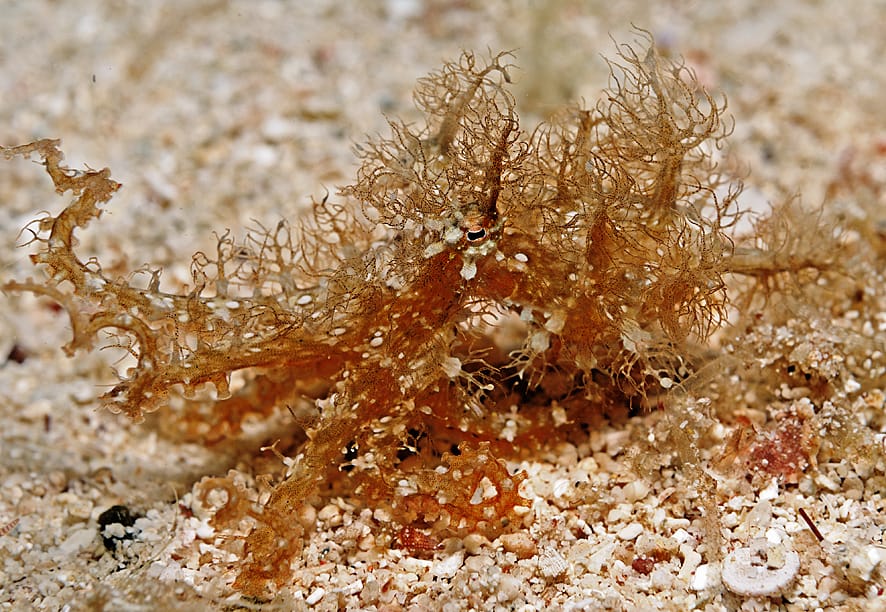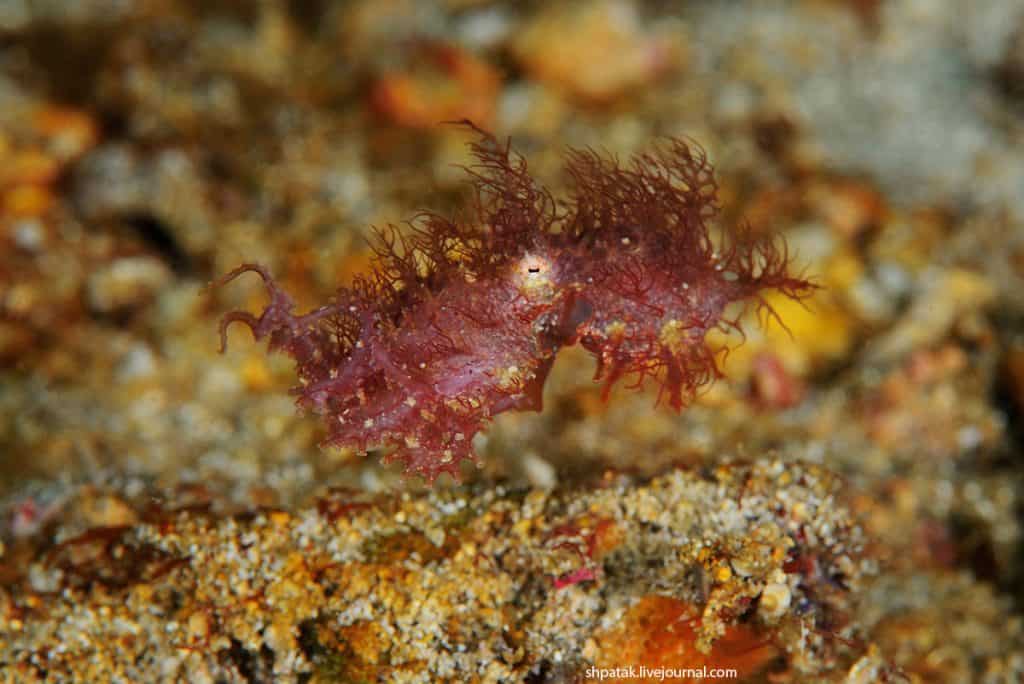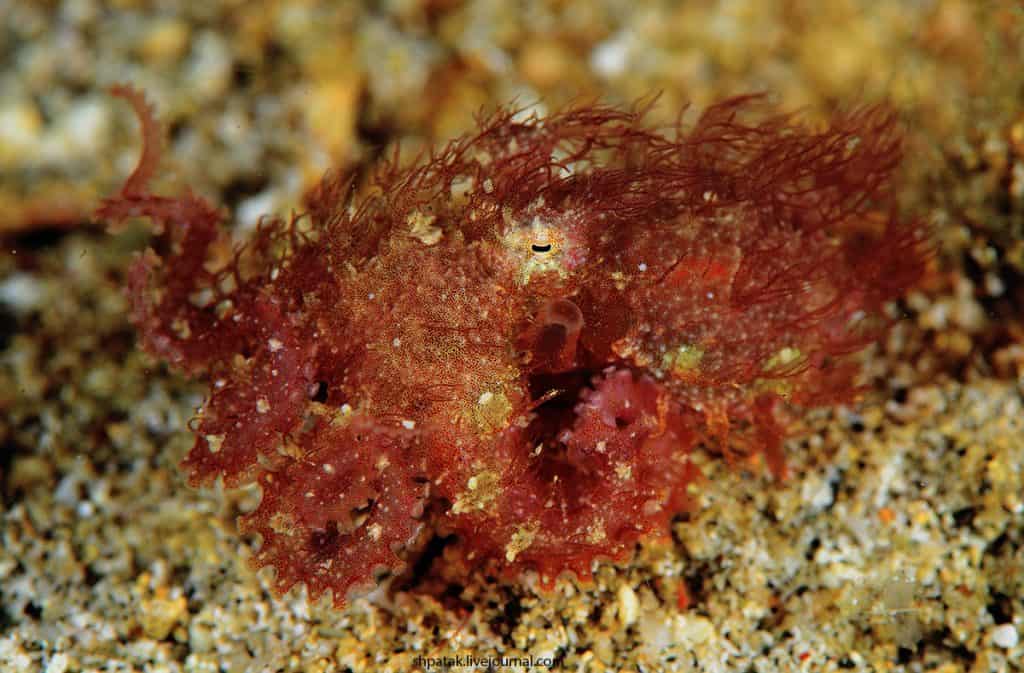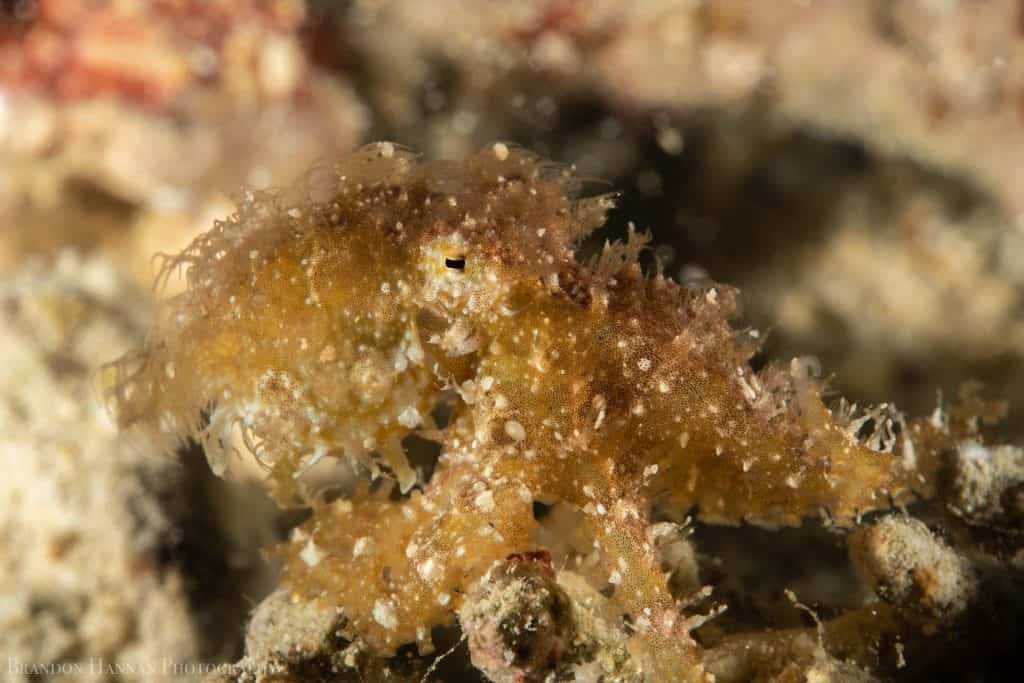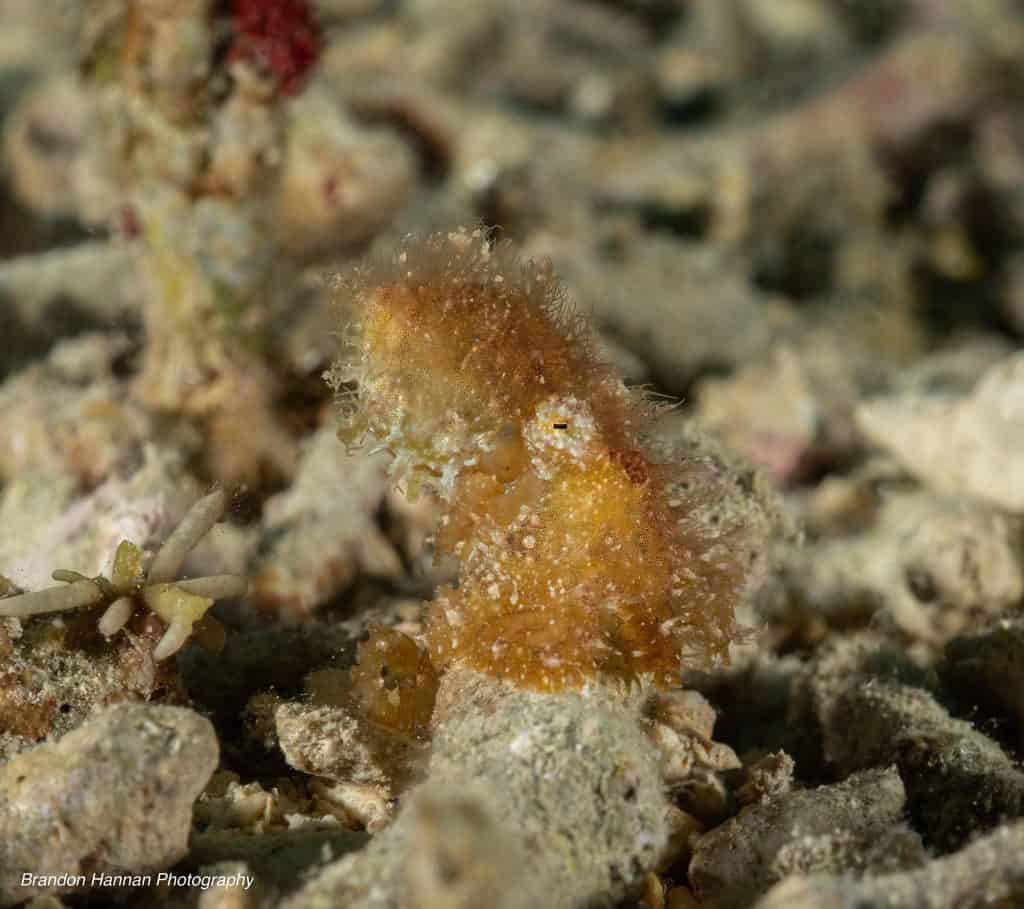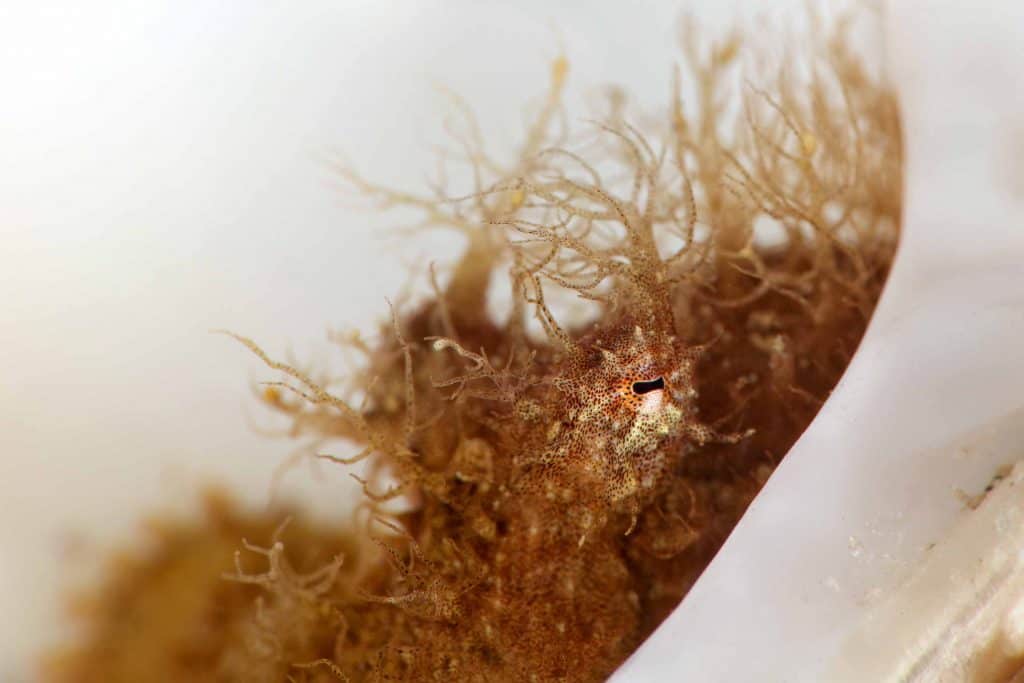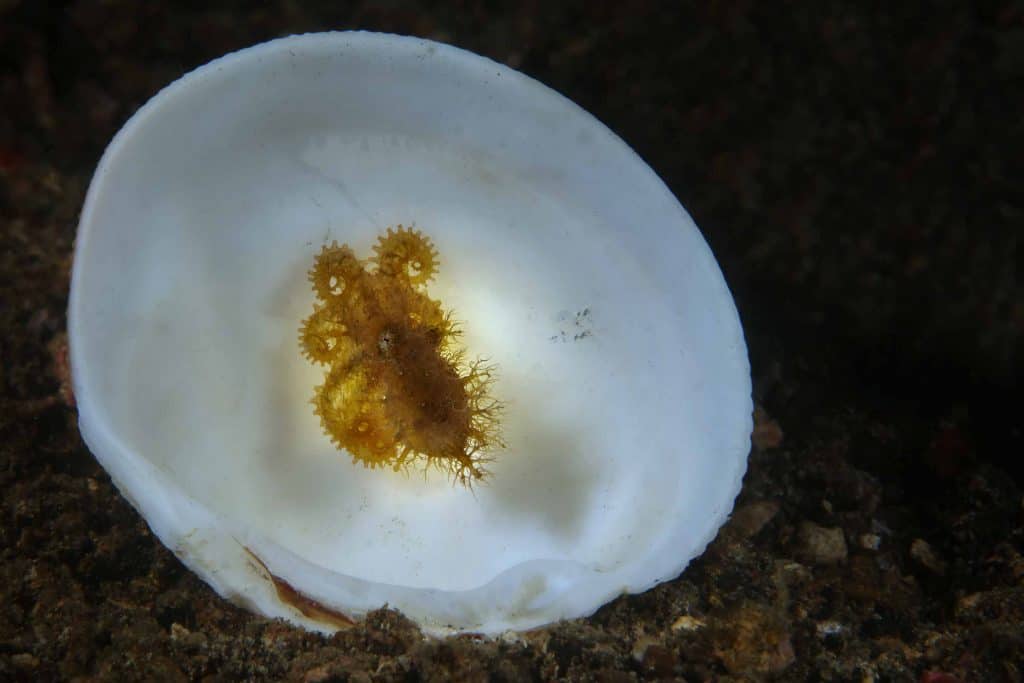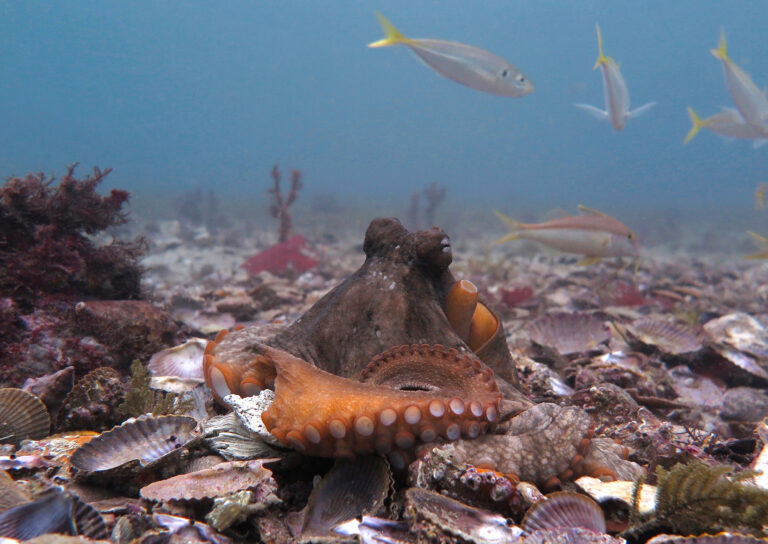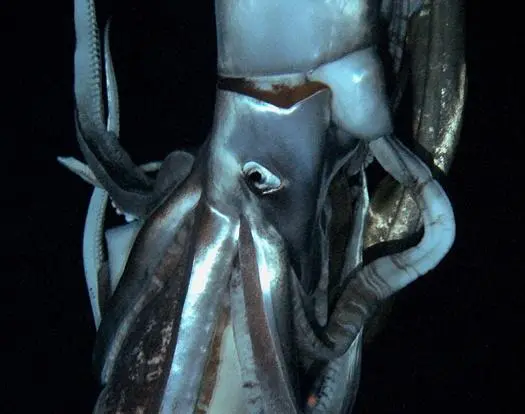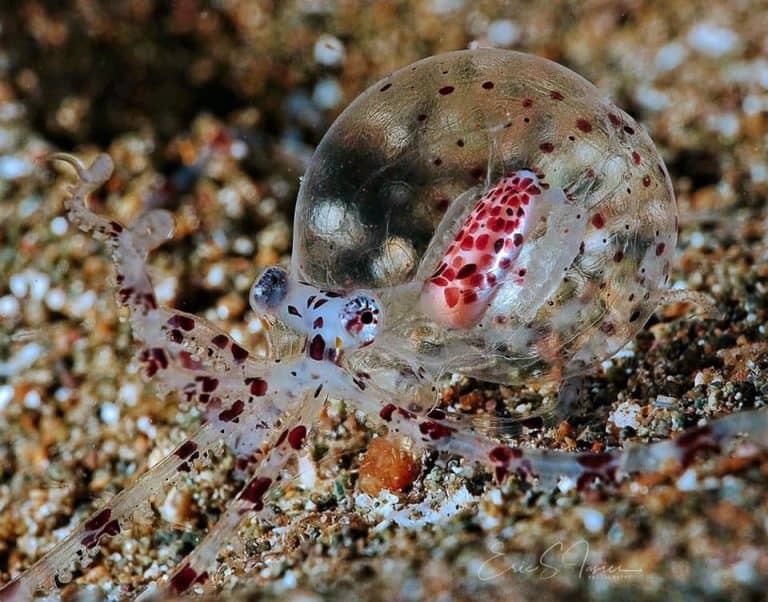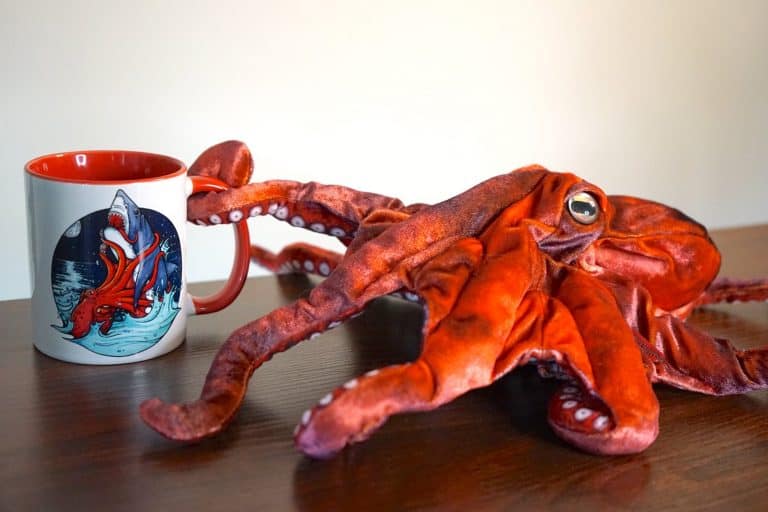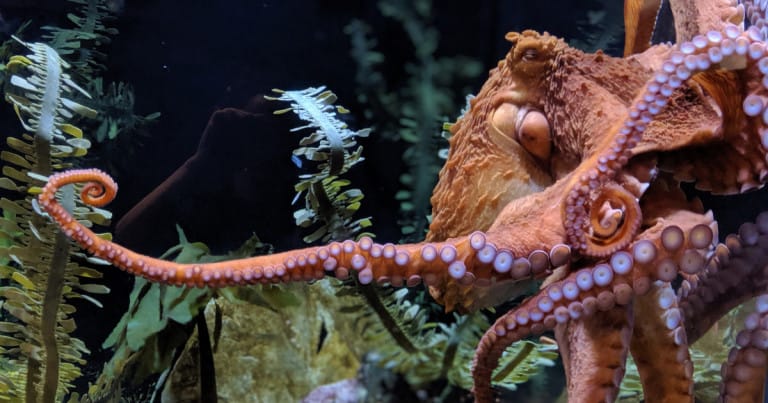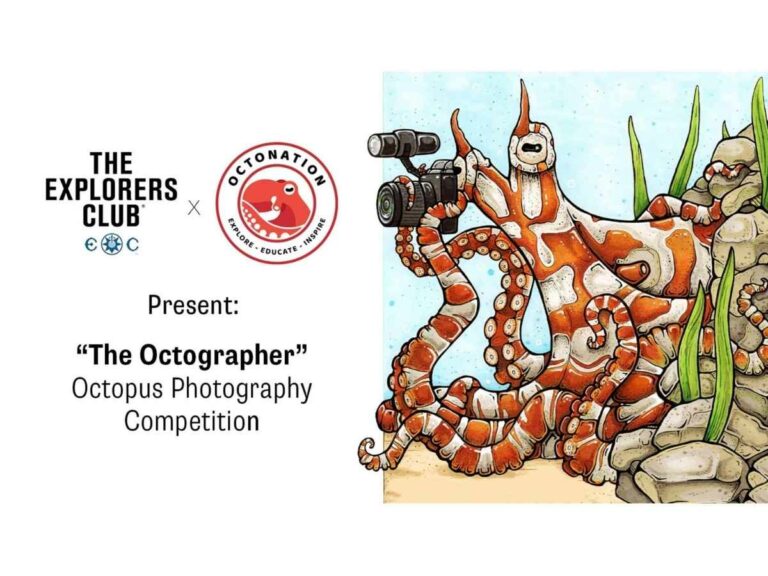Tiny Hairy Octopus: The Cutest Species You’ve NEVER Heard Of!
Have you ever heard of a Hairy Octopus? I know- a bit weird but they are seriously the cutest. This species was first discovered in the early 2000s. When they were first found, divers were certain they were looking at a plant (Can you see why?!!). After taking a closer look, they were shocked to discover it was something entirely different: a tiny octopus with hairy skin! Let’s take a closer look at this tiny species and get some more insight from the experts themselves.
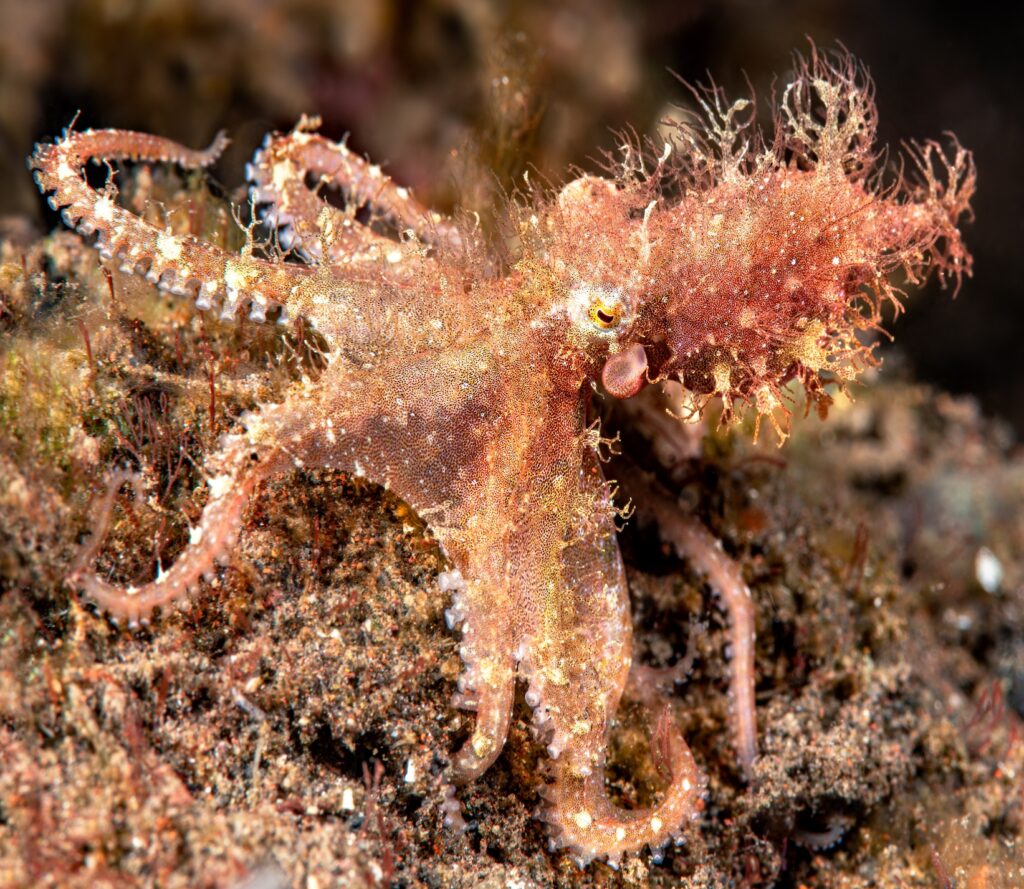
The Hairy Octopus is one of the most fascinating and adorable creatures in the ocean. There are over 300 octopus species, each with a different look, size, and superpower that make them the masters of their environment.
To our surprise, the Hairy Octopus doesn’t seem to be as popular on the internet, so make sure you share this post far and wide!
To tell you the truth, we still don’t know much about the teeny tiny Hairy Octopus, but we hope that scuba divers continue to find them so they can be plastered all over social media! Until then, this fun article contains some of what we’ve learned from underwater photographers and researchers.
So, What Does A Tiny Hairy Octopus Actually Look Like?
The Hairy Octopus has a round, fluffy-looking body with arms that twist and curl, making it look like an adorable PomPom ball! If an octopus were to ever star in a hair commercial– it would most definitely be this one.
The branching hair-like skin is an incredible superpower of the Hairy Octopus that allows it to expertly camouflage in its environment. The fuzzy skin is called papillae and this cryptic species controls the size and projections– meaning– it controls how hairy it wants to appear!
Let us explain a little more…
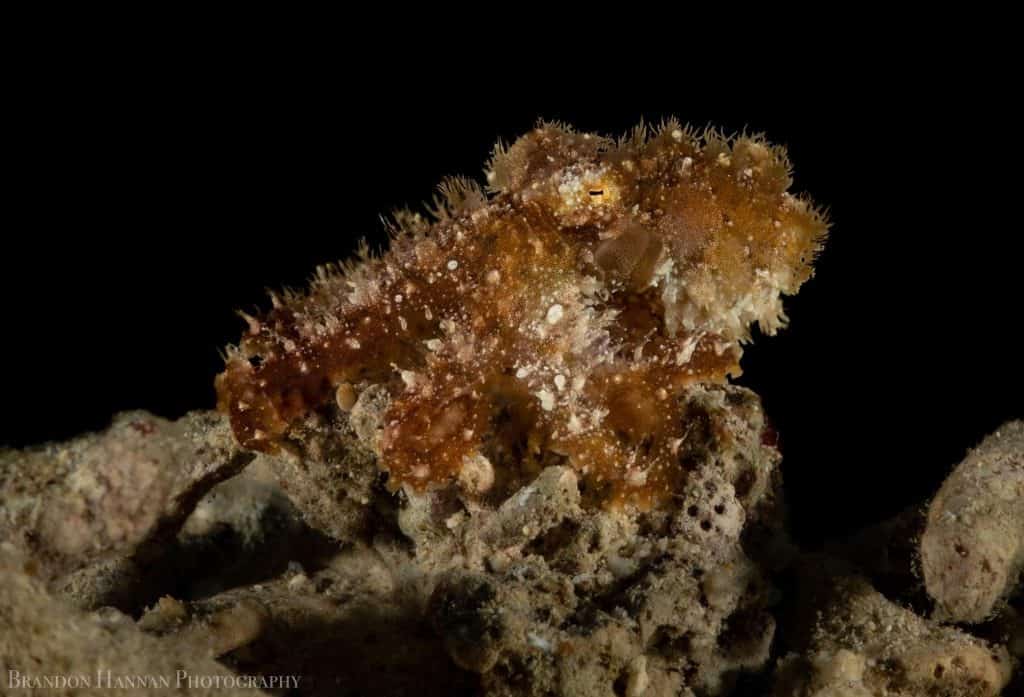
It Can Control How Hairy It Looks?
Under their skin, octopuses have a network of finely controlled muscles that can create fine bumps, high ridges, and even branching spiky horns that instantly appear to match their surroundings. These strange & fascinating muscle structures are called hydrostats (think of make-shift bones that consist of pressurized fluid.)
This is how octopus arms create an “elbow” in any place to begin walking along the seafloor.
Still kinda confused?
Think about how you have the ability to stretch out your tongue or how an elephant trunk moves with no bones! Now you know that these incredible on-call skin protrusions are referred to as papillae, pronounced pah-pill-ee.
What Color Is A Hairy Octopus?
The Hairy Octopus can range in color from white to cream to brown to red, either with or without patterns or spots.
Many divers have reported the colors around their eyes appear to be paler than its body. And, if you look closely at the video below, you’ll see that the chromatophores (color-changing cells) around the eyes sparkle (because they weren’t cute enough, right?!).
What’s Their Life Span?
The life span for these adorable creatures is unknown, but it’s guessed to be around two years old based on the information of octopus species nearby.
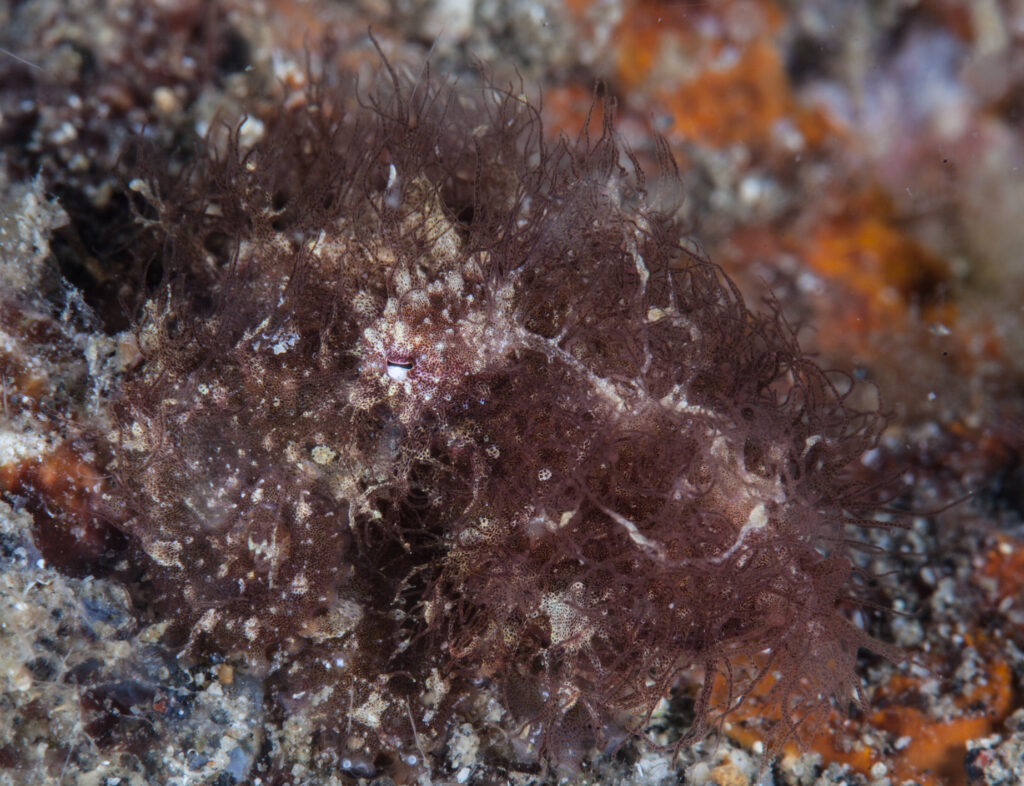
When You Say Tiny… How Tiny Are We Talkin’?
Paper clip sized– so, very small! The Hairy octopus has been reported by divers to have a total length of 2-5 cm (up to 2 inches!) with an arm length from 3-10 cm (1-4 inches) making it very difficult to spot! Diver Brandon Hannan said the one in this video below was smaller than his fingernail!
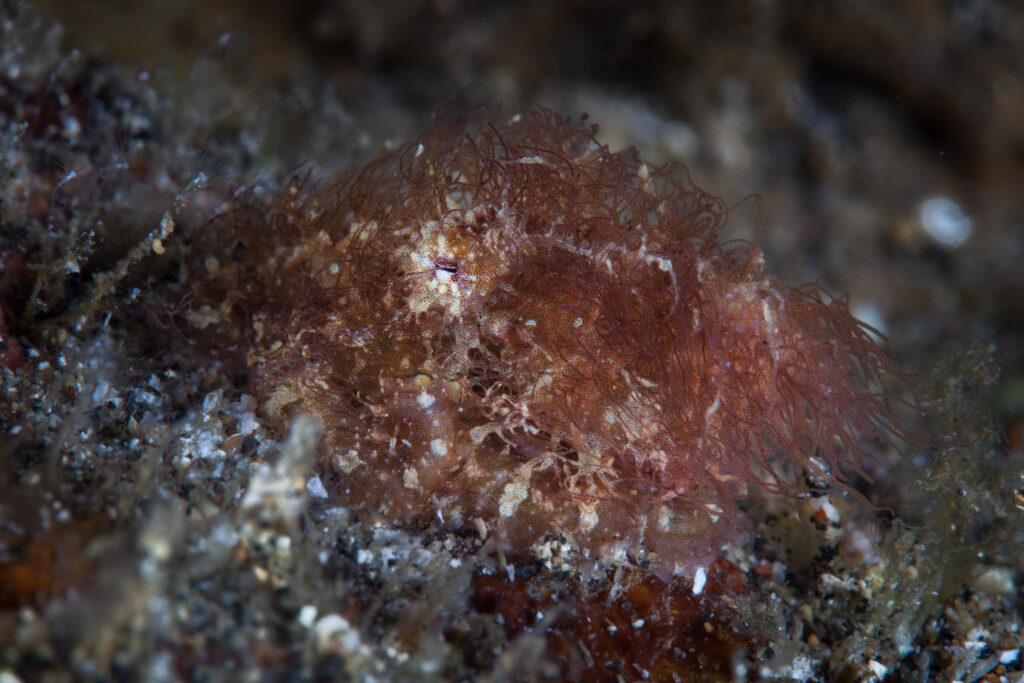
So, Where Can We Find A Cute Tiny Hairy Octopus?
Most sightings of the Hairy Octopus have been reported in the Lembeh Strait off of North Sulawesi, Indonesia. However, it has also been reported in Bali, Indonesia, and recently spotted (March 28, 2020) for the first time in the waters of Okinawa, Japan by Brandon Hannan!
“When I first found the Hairy Octopus, it was just floating across the rocky rubble and initially looked like a piece of algae or some plant matter. When I looked at the octopus closer, I noticed around the eye, it would radiate pale colors pulsating from the orifice of his eye just to the outside of his eyes only.
As I watched the Hairy Octopus move, it seemed to only move to the next piece of coral once the surge was pulling in the direction that it was going. The whole area is covered with broken pieces of coral and some seagrass.
The Hairy Octopus would stay near the rubble only.”
Brandon Hannan
When looking for this tiny camouflaged critter, Brandon suggests moving very slow and searching everything that looks like algae!
“The best suggestion I could make is to go really slow when looking for this species. When looking for the Hairy Octopus, be sure to check everything that looks like a piece of algae or ball of hair.
The species does not move much, so it can easily be missed. When I first found the Hairy Octopus, to say I was excited would be an understatement. I was so happy to finally check this species off my bucket list.”
Brandon Hannan
Does The Hairy Octopus Have An Official Scientific Name?
It has yet to be officially named by scientists, but OctoNation donors, SCUBA professionals, and underwater photographers are helping renew interest & uncover the mysteries of the elusive Hairy octopus.
We do know that the Hairy Octopus lives in areas with fine rubble (shells, small rocks, broken coral), seagrass, and volcanic black sand with algae patches.
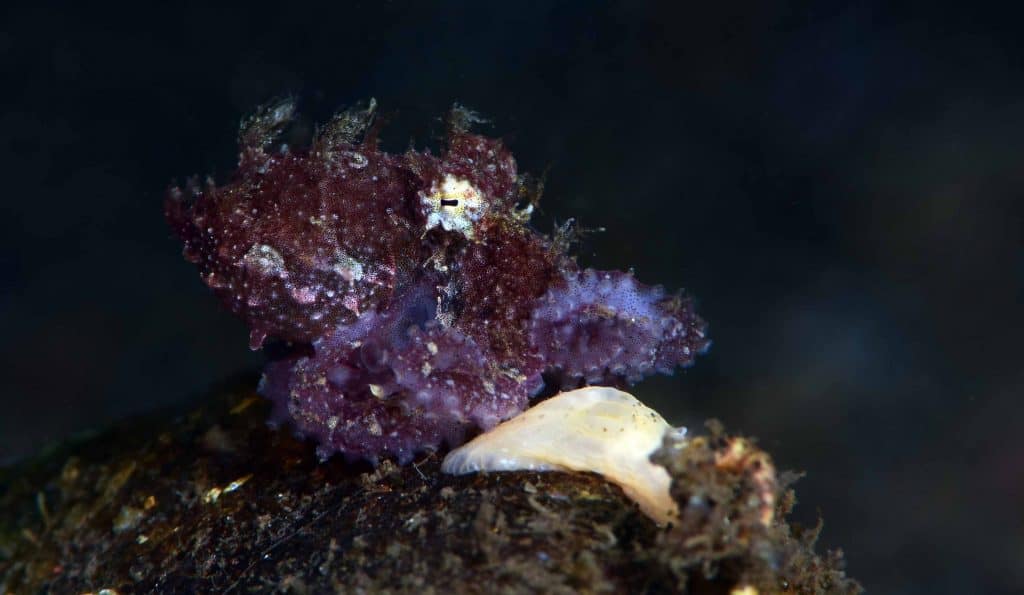
🐙 Octopus Fun Fact
Photographers mentioned that if you take your eyes off of the teeny puffball for even a second, you might never see it again! This may be because they eat mostly small crustaceans and den for longer periods of time.
Does The Tiny Hairy Octopus Produce Eggs?
Hairy Octopus eggs also remain a mystery – until our citizen scientists/divers uncover more info. We can only imagine how miniature those eggs are! We’ll keep you in the loop!
OctoNation is so fortunate to have members that have helped find out the secrets of this hairy little creature – but we’ll never know exactly what they’re up to down there until someone spots them again (fingers crossed)!
Sonja Geier’s First Experience With A Hairy Octopus
It was Sonja Geier’s birthday trip to Lembeh when she saw her first Hairy Octopus…
“It was towards the end of the dive when the guide from another group called us to around 25m. He knew I’d never seen a Hairy Octopus, so imagine how happy I was!
Once spotted, the Hairy Octopus usually starts moving around and you can see the whole thing pulsating and changing colors from white to red or brown.
To me, it’s purely one of the cutest critters out there!”
Sonja Geier
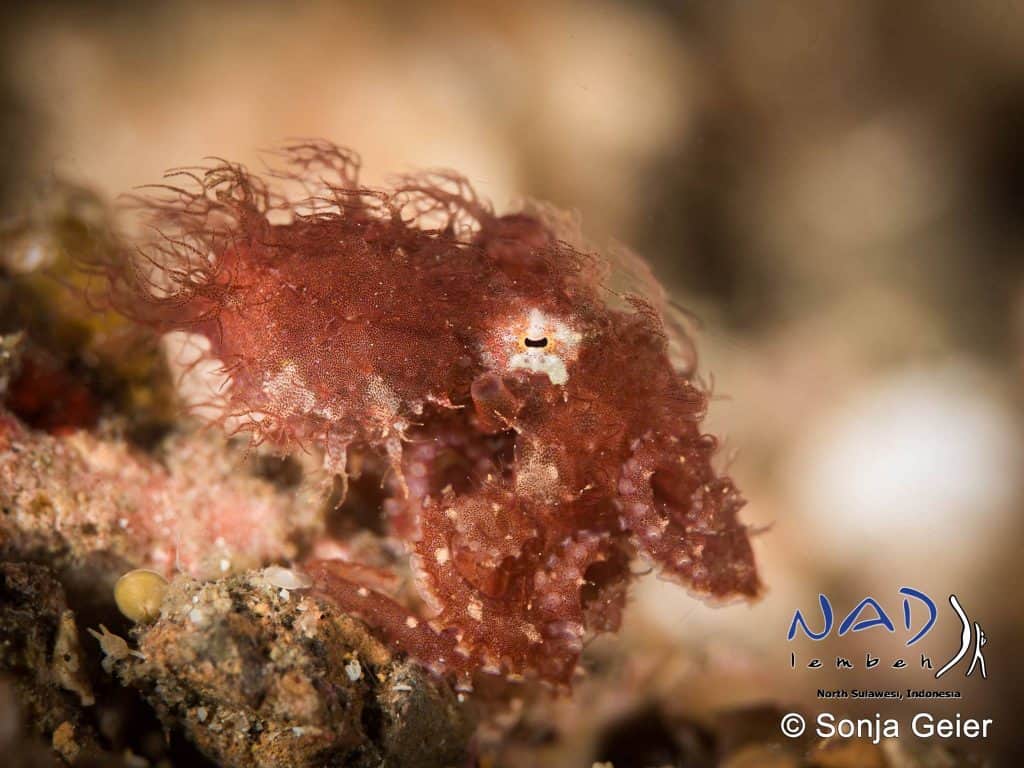
Since that first sighting, Sonja was eager to see the Hairy Octopus again!
“One of the dive guides mentioned before the dive that he saw a Hairy Octopus at the exact same site a few days before.
I said if he finds it again, I’d give him a tip, and of course he did!
Most of our guides [at NAD Lembeh] with more than 100 years of combined experience diving in Lembeh all say the Hairy Octopus usually stay around the same habitat for a couple of days and can be observed around the same time of the day.”
Sonja Geier
Since then, Sonja has observed the tiny Hairy Octopus eight times!
Tiny Hairy Octopus- The Cutest Species You’ve NEVER Heard Of!
We hope you enjoyed this article about one of our favorite ocean beings: The Hairy Octopus! If you spot one, please report it to us so we can collect their information (Good luck divers!).
If you want to educate yourself some more about all sorts of different cephalopods, take a look at our encyclopedia. Or, what we call it, our Octopedia!
Connect with other octopus lovers via the OctoNation Facebook group, OctopusFanClub.com! Make sure to follow us on Facebook and Instagram to keep up to date with the conservation, education, and ongoing research of cephalopods.
More Posts To Read:
If you enjoyed learning about the tiny Hairy Octopus, we recommend taking a look at some of these other profiles:
- 9 Giant Pacific Octopus Facts That Will Blow Your Mind
- Super Fun Facts About The Female Blanket Octopus
- Fun Facts About The Strawberry Squid
- Octo Chef: What Do Octopus Eat?
- Octopus Sweater: The Perfect Hand-Stitched Addition
- The Octo-Punch: The Truth Behind Why Octopuses Punch Fish
Article References:
- nad-lembeh.com Article from 2017. Sonja Geier
- lembehresort.com
- reefbuilders.com Article by Nicole Helgason Dec 13, 2015
- alertdiver.com/Octopus Ned and Anne Deloach
Interviews With: Sonja Geier and Brandon Hannan
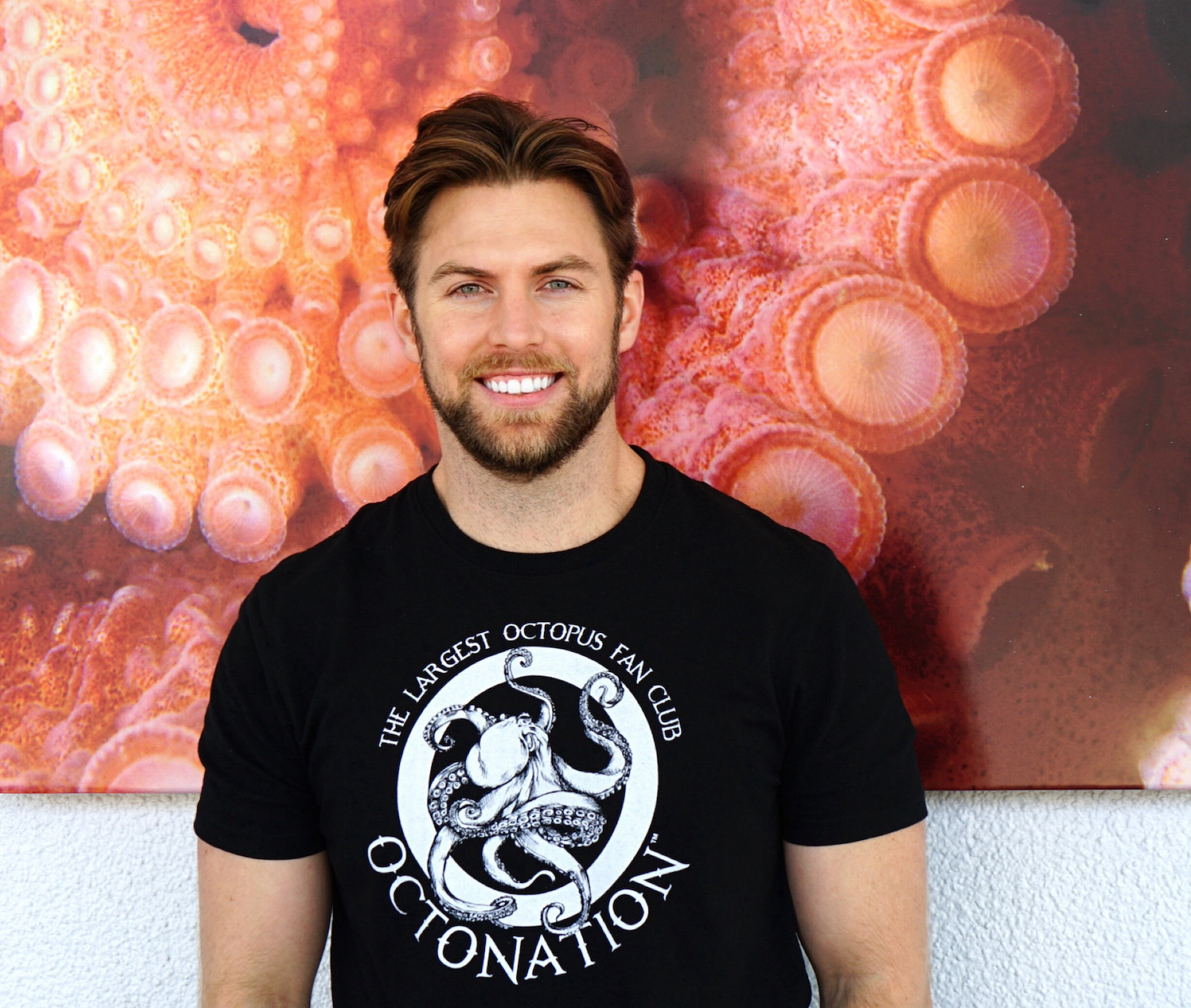
Warren is the Founder of OctoNation, a nonprofit organization that works to inspire the wonder of the ocean by educating the world about octopuses. As a professional community building strategist, Warren has collaborated with hundreds of underwater photographers, artists, scientists, and aquarists to create educational resources for both children and adults.
Jacque Cousteau said it best, “People protect what they love.” OctoNation’s community of over 1 million members wholeheartedly agree! Wanna get involved? Email [email protected]
